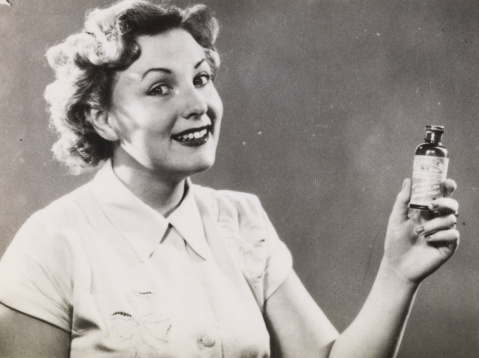THE FOUNDER of the women’s health movement, Barbara Seaman, once remarked that, with all the medications that are marketed specifically for women, one might think that pharmaceutical companies were out to cure “the disease of being female.” Menstruation, fertility, pregnancy, menopause — it seems that at every life stage we suffer from a new kind of illness that requires treatment.
When we are having periods, we are told it is best to try to have as few as possible and so we take the birth control pill; then when our periods come to an end, we are told we need to regain our pre-menopausal hormonal state. When we are young we are told we have too many hormones and need to keep them in check; then when we are older we are told we don’t have enough hormones and need to take supplements. The bodies women have developed, via evolution over millions of years, to be and to do – the bodies that keep us living longer than men as a rule, despite all these illnesses we have to contend with, by the way – can never get it right.
Now that they’re medicalizing maleness too, it’s starting to look like it’s the disease of being a human being that’s the next target to cure. That makes sense – marketing to only around 50% of the population at any one time is not a great sales tactic. Not that women are left out of the plan to push the latest hormone-based miracle drug. We have testosterone therapy for aging, weary men and now we have testosterone therapy for aging, weary women, too. Thanks Big Pharma. Really.
AndroFeme is a testosterone cream that is set to fix all the problems associated with “just not feeling right” – and boy (or should I say girl?), are those a lot of problems. Clearly, drug companies are sticklers for the specifics. The big problem here is low libido. Testosterone is linked to sex drive in women and a female Viagra has been in development for some years now, but trials have not shown it to be effective enough so far. In the drug’s clinical trials, the placebo tends to fair rather too well against the actual medication. With AndroFeme, they are hoping that the side effects of your current libido-quashing medication (say, the Pill and/or anti-depressants) might be offset by this treatment. So along with your drugs, you’ll need a side order of more drugs, just so you can tolerate the first drugs better. It’s a weird kind of world in which women are told the Pill will sexually liberate them, only then to be told it depletes testosterone, which lowers their sex drive, which can be fixed by a cream that will then sexually liberate them.
Having a low sex drive, if you’re a woman, is now called “female sexual dysfunction.” To create a drug, the company requires justification in the way of something that the drug is going to treat, and because they can’t put down “being a woman” on the form (even if they really want to), they have to make stuff up. Apparently, 43% of us are sexually dysfunctional — and not in a 50 Shades way. For half of those women, the reason they got labeled dysfunctional is they don’t fancy having sex as much as… well, here’s the other thing, how much is appropriate? Let’s ask the pharmaceutical company execs, because they know these things. Of all the reasons a woman might not want as much sex as a pharmaceutical company exec expects her to want (I’d put my money on the Pill, stress, and lack of vacation time as the top three culprits), you may not think testosterone deficiency would be the main issue, but it is. Of course it is.
Did I mention that the FDA hasn’t even approved AndroFeme? Right now doctors have taken it upon themselves to prescribe testosterone supplements tested on and approved for men only to their female patients (albeit in lower doses). AndroFeme is only available by ordering it in from Australia, which, incidentally, is just a tad illegal. Because experiencing a lowering of the voice octave, increased hairiness, acne, signs of virilization (AKA becoming male) — a few of the many side effects you might experience if you happen to accidentally squeeze a little too much out of the AndroFeme tube — just wouldn’t be as fun without a serving of hefty fines or jail time on the side, right?
Luckily, one of the reasons Androfeme has not been approved in the US is thanks to the lobbying efforts of women like Dr Leonore Tiefer and the New View Campaign, which have, through their combined and continued efforts, forced the FDA to think twice about medicalizing women’s sexuality.
In the New View Campaign’s manifesto, Tiefer and her associates ask that we move away from labeling women as dysfunctional and consider a more holistic approach to viewing female sexuality and sexual problems. Tiefer calls upon doctors, pharmacy execs and others with the power to make decisions about women’s sexual health to honor the Declaration of Sexual Rights, which includes the right to sexual education, sexual health, and sexual pleasure. But, the New View Campaign points out, “social, political, and economic conditions, including widespread sexual violence, limit women’s access to sexual health, pleasure, and satisfaction in many parts of the world.” What kind of sexual satisfaction and desire can we expect a woman to have if all her sexual experiences are couched in violence and force? Why is she the one that gets diagnosed with society’s illness?
Because, the way I see it, it’s not women but how women get treated that is dysfunctional. What we’re looking at is not testosterone deficiency, but a deficiency of sexual health education, body literacy, and gender equality. Big Pharma needs to get working on a pill for that, because I, for one, would be first in line.












-300x169.jpg)




